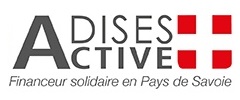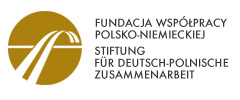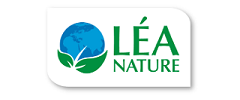Parma 2010: Indoor air - a hidden danger in children's bedroom
Babies and young children exposed to high doses of formaldehyde and volatile organic compounds (VOC) in indoor environments: WECF publishes results of European study on indoor air quality in children's rooms, to be presented at next week’s Ministerial Conference "Environment and Health" in Parma
04.03.2010 |WECF Press Release

In 2009, WECF provided as part of its Nesting project a ‘Test Your Nest“ kit to participating parents in Greece, France, the Netherlands and Germany in partnership with the French national consumer protection institute (ICN) and Quad-Lab laboratory. Test your Nest was a European-wide study on indoor air quality which aimed at investigating the level of formaldehyde and total VOCs (Volatile Organic Compounds) in children’s bedrooms.
Test Your Nest
The tests were conducted in Germany, France, Greece and the Netherlands with a few additional participants from Belgium and the United Kingdom. Participants were pregnant/partners of pregnant women or were parents of young children under the age of 3 who intended to have or had had renovations in the previous months on floors or walls or had installed new furniture in baby’s bed room. The testing process was both reliable and very simple. The samplers were placed in the baby‘s room for a period of seven days and were then sent to a certified laboratory. The ICN reviewed the findings and published the results in its monthly magazine: 60 Millions de Consommateurs (60 million consumers). The individual test results were sent to all the participants.
Alarming results
In forty percent of the results, values found for both formaldehyde and VOCs were above accepted levels for the French safety and environmental agency AFSSET and the respected EU level scientists’ network ECA (European Collaborative Action on indoor air quality).)Formaldehyde, for example, which is emitted from veneered wooden furniture is a known carcinogen (IARC/)WHO), while volatile organic compounds from paints, varnishes and cleaning products can irritate eyes, nose and throat, trigger allergies and cause digestive problems. The results clearly show that the indoor air quality in baby’s bedroom was better in homes where parents were informed about the necessity of ventilating.
"Although we only targeted a small group of parents, the results clearly show that baby ‘s bed rooms are not as safe as we think. Newborns and infants in participating countries are exposed to indoor air pollution, which can be very harmful for their development" says Sascha Gabizon, Executive Director of WECF. "The result is worrying for infants especially when you realise that young children spend about 90 percent of the time indoors. And pollutants such as formaldehyde and VOCs are often not recognizable and results show more and more that volatile organic compounds emitted during renovation and decoration of the nursery are responsible for allergies and eczema becoming more frequent »
NESTING Project
The Test your Nest study was realized in the context of the Nesting project. NESTING aims at helping new parents to create a healthy environment for their baby. NESTING is a project initiated by WECF in 2008. An internet platform in 7 languages, Nesting is dedicated to inform the general public, and especially new parents on how to develop healthy alternatives to products made of hazardous chemicals: from baby care products to paints, bed furniture, toys, etc. Nesting focuses on translating new scientific insight on chemicals consequences on children’s health for the general public, and explains how to avoid endocrine disrupters, neurotoxic, carcinogenic, etc. substances such as Bisphenol A, phthalates, brominated flame retardants, mercury, lead, etc. Indoor air pollution and the potentially harmful impact it can have on children’s health is also a very important subject.
Towards PARMA 2010
WECF (representative of the European ECOFORUM) is member of the EEHC, a multi-stakeholder committee which was created to help organize ministerial conferences on Environment & Health in WHO European Region. 53 countries are part of the process. The process, initiated in 1989 is unique, and brings together governments, International organizations and NGOs: Children are a focus point since 2004, when EHAP (Environment and Health Program) became CEHAPE: 4 priority goals were then identified as focus for environment and health policies in Europe, among them clean indoor air. At national level, several national EHAP have been initiated and are now being developed;
In March 2010, in Parma, the 5th Ministerial conference on Environment and Health will take place. After the adoption of the CEHAPE (Children’s Environment and Health Action Plan for Europe) in 2004 in Budapest, the Parma conference will define the priorities of the process for the next years. WECF urges WHO and governments to reduce the impacts of environment on children’s heath, by reducing the environmental burden of disease.
About WECF
A healthy Environment for All is the main mission of WECF, Women in Europe for a Common Future. WECF is a network of a hundred women's and environmental organisations in 40 countries. Our network spans Western Europe and the EECCA region (Eastern Europe, the Caucasus and Central Asia). WECF has three offices: in the Netherlands, Germany and France. WECF mobilises women to find affordable solutions to the environmental health problems in their communities and encourages women in decision making.
Notes for the editors :
For more information, please contact: Mrs. Chantal van den Bossche, press officer WECF +31-6.2812 9992, chantal.vandenbossche@wecf.eu.
1. Indoor air pollution
The majority of people spend more than 20hrs/day indoors, whether in a closed space or semi-closed space (at work, at school, at home, or on public transports). Babies and young children spend even more than 20hrs/day indoors. Test your Nest provides a concrete overview of indoor air pollutants called VOC (volatile organic compounds) present in newly renovated baby rooms and illustrates the level of exposure of newborns and babies to indoor air pollutants at home and illustrate why indoor air is a major public health concern for children, in the context of the Parma Conference (Children’s European and Health Process).
Indoor air quality is one of the 4 priorities defined by the CEHAPE process
- WECF, member of the EEHC, involvement in H&E European process since mid 90s : aim = reduce the environmental burden of disease
- Parma = assessment of 20 year European H&E process + road the map for the future
- RGP III of CEHAPE = clean indoor and outdoor air – children’s health conditions linked with indoor air quality, Children’s sensitivity to indoor air pollutants due to their metabolism
- The study gives a quantitative and comparable results on indoor air quality in baby’s room
2. Test Your Nest Study
The study gives overview of indoor air pollutants in children’s bed rooms
- Participants: 70 households having renovated the baby room and/or installed new furniture, 4 countries = Greece, the Netherlands, France, Germany
- Partnership of WECF with INC, the biggest French consumer institute
- The tests were conducted in the period September October 2009
- Pollutants tested: formaldehyde, known carcinogen (WHO-IARC), total VOC (more than 100 compounds with a focus on the most present families) including benzene, alcohols, etc.
3. Poor indoor air quality despite good habits
Target = young parents with ventilation habits of the participants relatively above the average of the general population (around 50% ventilate more than 1 hour/day and using eco-friendly cleaning or renovation products
- Found total of VOC: 40% of people are above the limit values
- Formaldehyde levels: Even if only 10% of the participants are above the limit value of 10 µg.m-3 for sensitive people recognized by WHO, the EU INDEX project indicates 1 µg.m-3 as a guideline for long-term exposure. Only 10% of the participants are under 1 µg.m-3
- Total VOC levels: 30% of the participants are above the limit value of 200 µg.m-3. Most common found are i.e. those derived from citrus and pine perfumes used in cleaning products
Sources of VOC: varnishes, paints, cleaning products, wood preservatives, glues, laminated wood, deodorizers, etc.
4. Small children at particular risk
Small children and babies are at particular risk from toxic chemicals in products around them. Their small bodies are more susceptible to toxic chemicals because their developing systems are immature. They have narrower airways and smaller lung capacity which means the dose of pollutants they receive is more concentrated than in adults. WECF puts great importance on protecting children because they are the most vulnerable members of society. All of us share a responsibility to protect children from harmful pollution, which can cause long term, sometimes irreversible, physical and mental damage. Our aim is to ensure that children can grow up in a healthy environment - without being exposed to hazardous chemicals in their food, toys and environment – so that their brains and bodies can develop to fullest potential. Protecting children will help reduce the incidence of chronic diseases, reproductive problems and behavioural problems - and even cancer, the incidence of which has grown tremendously over the past decades. WECF has two major projects that concentrate on improving children‘s environment. They are the Nesting project and the Safe Toys Coalition.
Related News
Meet the Winners of the Gender Just Climate Solutions Award at COP24
On the 70th anniversary of the Universal Declaration of Human Rights, we awarded Gender Just Climate Solutions Winners at the climate negotiations in Katowice, Poland
11.12.2018
Invitation: Gender Just Climate Solutions Award 2018
10 December, COP24 Katowice
04.12.2018
Getting to the Future We Want
4-7 November, Brussels: European Environmental Bureau’s (EEB) Annual Conference
12.11.2018
GoodFood4All
WECF and partners all over Europe start GoodFood4All Campaign
06.11.2018
#Ruralwomen: join our Women2030 campaign!
15.10.2018







































